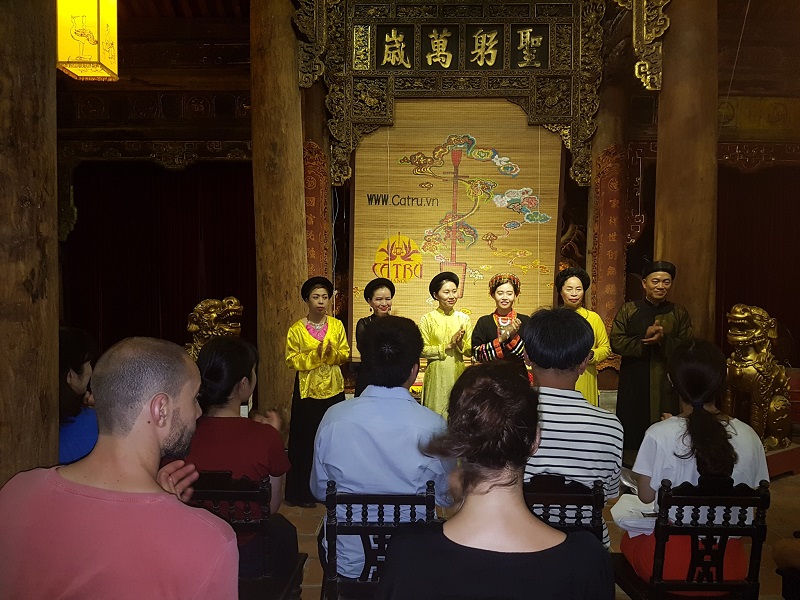Preserving Intangible Cultures in Hanoi: The Role of Artisans
During a recent workshop in Hanoi, Associate Professor Tran Thi An, President of the Hanoi Folk Arts Association, highlighted the importance of folk artists in preserving and promoting the rich cultural heritage of the city. By transmitting the essential values of Hanoi’s ancient culture, these artists play a vital role in safeguarding the intangible cultural treasures of the capital.
| A performance by the Hanoi Ca tru Club at Kim Ngan Temple, No.42 Hang Bac Street. Photo courtesy of the club |
During a workshop titled “The Role and Responsibility of Artisans in Protecting and Promoting the Value of Hanoi’s Intangible Cultural Heritage,” she emphasized the significance of folk artists in preserving and promoting cultural heritage. These artisans possess a social responsibility to safeguard and promote the values associated with cultural heritage.
According to researcher Le Hong Ly, it is crucial for folk artists to play a more active role in educating the community, particularly the younger generation, about the significance of intangible cultural heritage.
According to statistics provided by local authorities, Hanoi is home to a substantial number of intangible cultural heritage sites, with a current count of 1,793 sites. This makes Hanoi the city with the highest number of intangible cultural heritages in the country. These heritages encompass a wide range of elements, including folk knowledge, social customs, and various folk art genres.
The city has honored a total of 18 folk artists with the prestigious title of People’s Artist, showcasing their exceptional talent and contribution to the arts. Additionally, 113 talented individuals have been recognized as Meritorious Artists for their outstanding artistic accomplishments and dedication to their craft. This recognition speaks to the city’s commitment to supporting and celebrating artistic excellence within its community.
| Foreign visitors to Hanoi enjoyed the Hanoi Ca Tru Club show, which takes place every weekend. Photo courtesy of the club |
Local authorities have implemented favorable policies to support folk artists in recent years. As a prime example, the city offers monthly financial assistance to People’s Artists and Artists of Merit, encouraging them to continue preserving and promoting the value of intangible cultural heritage.
Moreover, Hanoi is expanding its support network for intangible heritage clubs. Existing clubs, such as Khanh Ha Commune’s Drum Club in Thuong Tin District and Yen Nghia Ca Tru Club in Ha Dong District, will soon be joined by 10 more. These new clubs will include Ca Tru from Lo Khe Village, Folk Dance from Trieu Khuc Village, and Tuong Folk Singing from Xuan Non Commune, among others. This expansion aims to further enrich and promote the cultural heritage of Hanoi.
The post Preserving Intangible Cultures in Hanoi: The Role of Artisans appeared first on Vietexplorer.com.


Comments
Post a Comment